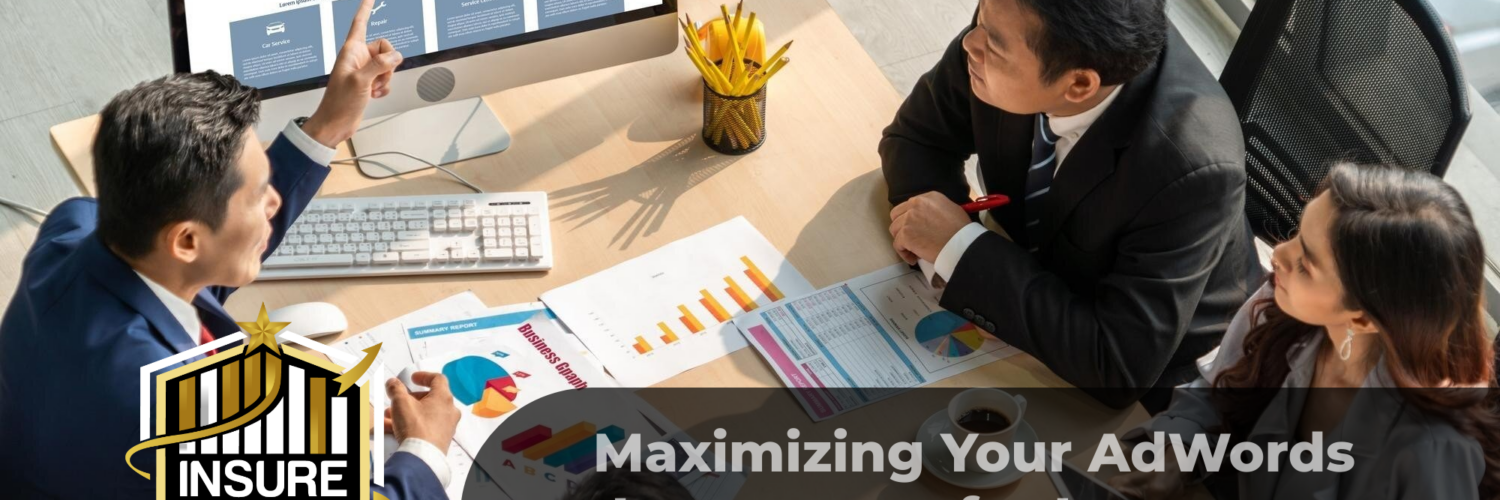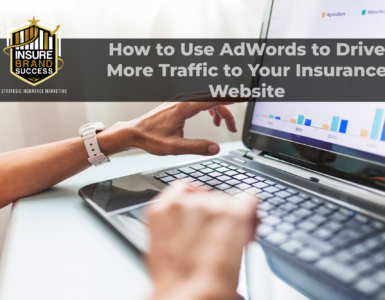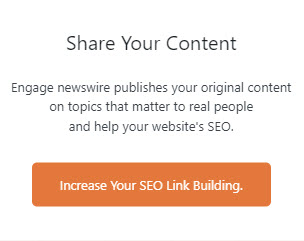Evolving Challenges in Insurance Marketing
Insurance agencies today operate in an increasingly digital-first world. The shift toward online interactions has dramatically changed how potential clients discover, evaluate, and engage with insurance providers. Traditional client acquisition methods — such as cold calling, direct mail, and even in-person referrals — are becoming less effective as consumer behavior evolves.
Today’s modern insurance buyer is more informed, independent, and selective. Before ever contacting an agency, they are likely to research online, compare quotes across multiple platforms, and read reviews from other customers. In many cases, they have already narrowed down their options and may even select a provider based on digital impressions alone.
This fundamental change in the decision-making journey presents evolving challenges in insurance marketing. Agencies can no longer rely solely on legacy tactics; they must now embrace and master the digital tools that influence purchasing behavior. A website is no longer just a digital business card — it’s a conversion engine. Social media, SEO, and email marketing all play a role in nurturing leads and building trust. But among these tools, one tactic stands out for its ability to drive immediate results.
Pay-per-click (PPC) advertising, specifically through Google AdWords, offers a powerful way to capture high-intent leads — but only when managed strategically. When executed well, PPC campaigns allow insurance agencies to appear exactly when potential clients are searching for coverage options, leading to higher-quality traffic and more conversions. However, without a clear strategy, ad spend can be wasted on the wrong keywords or poorly targeted audiences.
To thrive in today’s marketplace, insurance agencies must overcome these evolving challenges in insurance marketing by building smarter, more data-driven campaigns. Leveraging platforms like Google AdWords, coupled with ongoing optimization and performance tracking, can position agencies ahead of their competitors and directly in front of their most valuable prospects.
Why AdWords Matters in the Insurance Space
AdWords enables insurance agencies to position themselves directly in front of prospective clients at the exact moment they are searching for coverage. This is a critical advantage in an industry where timing and visibility can make or break a conversion. When someone types in phrases like “best auto insurance” or “affordable health coverage,” they are demonstrating high commercial intent — and AdWords puts agencies in the prime position to respond.
The intent-driven nature of paid search means leads acquired through AdWords tend to be more qualified. Unlike passive brand exposure through display ads or social media, PPC search users are actively looking for solutions. This not only shortens the sales cycle but also increases the likelihood that a click will convert into a policyholder. These users often arrive with a clear idea of what they need, making it easier for agents to tailor offerings and close the deal efficiently.
However, this high level of targeting and quality doesn’t come cheap. According to WordStream, insurance keywords are among the most expensive in the PPC ecosystem due to intense competition. In fact, some insurance-related terms rank at the very top of cost-per-click (CPC) averages across all industries. This heightened demand stems from the high lifetime value of insurance customers, which justifies the aggressive bidding behavior of competitors.
Because of these costs, agencies can’t afford to run poorly managed campaigns. Every dollar must be tracked, optimized, and justified. Therefore, maximizing the return on ad spend (ROAS) is crucial for long-term success. A well-structured AdWords strategy — including tight keyword grouping, compelling ad copy, smart bidding strategies, and high-converting landing pages — is essential not only to compete but to thrive in the insurance space.

Building a High-Impact AdWords Strategy
Crafting an effective AdWords campaign in the insurance space requires more than just setting a budget and writing a few ads. It demands strategic precision, ongoing optimization, and a deep understanding of what drives insurance shoppers to click — and convert. Below are the foundational pillars of building a high-impact AdWords strategy that delivers real results.
1. Keyword Precision
Broad keyword targeting can waste budget. Casting too wide a net often results in clicks from users with low intent or mismatched needs. To prevent this, insurance agencies must perform rigorous keyword research to target high-intent phrases such as “affordable home insurance quotes” or “business liability insurance near me.” These long-tail keywords reflect specific searcher intent and align closely with the services offered.
Using Google’s Keyword Planner allows agencies to uncover relevant search trends, estimate traffic potential, and identify keyword opportunities within their niche. Equally important is the use of negative keywords — terms that signal low or irrelevant intent. For example, excluding searches like “free trial insurance” or “sample policy PDF” can eliminate irrelevant clicks and focus spend on terms that convert. This level of keyword precision reduces waste and increases campaign efficiency.
2. Geo-Targeting for Local Advantage
Insurance needs often vary by region due to state-specific regulations, natural disaster risks, and localized market dynamics. Consumers are typically looking for providers familiar with their area and compliant with regional laws. Localized targeting allows agencies to tailor messaging and offers for maximum relevance.
Geo-targeting ensures ads are shown only to users within defined service areas — whether that’s by city, ZIP code, or radius. This not only sharpens audience targeting but also lowers unnecessary spend on out-of-area clicks. Pairing geo-targeting with custom landing pages that reference the local area (e.g., “Dallas Home Insurance Experts”) helps improve Quality Scores and boosts conversion rates by enhancing trust and personalization. For multi-location agencies, this strategy can be scaled for consistent performance across different markets.
3. Leveraging Ad Extensions
Beyond ad copy, ad extensions are a powerful way to enhance visibility and increase click-through rates. These optional features expand the size and impact of your ads, making them more informative and engaging directly within the search results.
Ad extensions such as callouts, sitelinks, and structured snippets provide additional context and options to potential clients. For instance, showcasing value propositions like “24/7 Customer Support” or “Free Policy Reviews” in callout extensions instantly communicates benefits that differentiate your agency. Sitelinks can guide users to specific sections of your site, such as policy types or contact forms, streamlining the customer journey. Structured snippets allow agencies to highlight coverage options, specialties, or service categories in a scannable format.
When properly implemented, these extensions can improve your Ad Rank, reduce cost-per-click (CPC), and ultimately help drive more qualified traffic to your site.
Optimization Through Analytics
Launching an AdWords campaign is just the beginning. To achieve sustained success and ROI, continuous optimization is essential for campaign success. Digital advertising is dynamic — consumer behavior shifts, competition fluctuates, and Google’s algorithms evolve. That’s why consistent data monitoring and proactive adjustments are crucial to staying ahead.
It starts by tracking key performance indicators (KPIs) such as click-through rate (CTR), cost-per-click (CPC), and conversion rate. These core metrics reveal how effectively your ads attract attention, how efficiently your budget is spent, and how well clicks translate into actual policy inquiries or sales. Agencies that ignore these indicators risk wasting ad spend or missing valuable opportunities for growth.
Platforms like Google Analytics and built-in conversion tracking tools provide the insights needed to evaluate both campaign-level and keyword-level performance. For insurance agencies, it’s especially important to go beyond surface metrics and understand which keywords or ads actually lead to revenue-generating outcomes — such as quote requests, form submissions, or policy signups. This clarity allows marketers to allocate budget where it matters most.
One of the most effective ways to improve performance is through A/B testing. Testing different ad copy, bidding strategies, and landing page designs provides actionable data to refine performance further. For example, does a headline emphasizing “Same-Day Coverage” outperform one focused on “Low Monthly Rates”? Does using a manual bidding strategy drive better ROAS compared to automated bidding?
Over time, these tests help uncover what messaging, targeting, and layouts resonate most with your audience. By regularly analyzing results and making informed optimizations, agencies can continuously improve campaign efficiency and drive stronger business outcomes — transforming their AdWords investment into a reliable lead generation engine.
Integrating AdWords into a Larger Digital Strategy
While AdWords can generate quick wins, it is most effective when integrated with a broader digital marketing for insurance agencies strategy. Paid search is powerful, but its true value emerges when it’s part of a cohesive ecosystem that builds brand visibility, trust, and conversion readiness across multiple touchpoints.
A comprehensive strategy may include SEO, social media, content marketing, and email campaigns, all working in tandem with AdWords. This integrated approach ensures that potential clients encounter consistent messaging whether they discover your agency through a Google ad, a blog post, or an Instagram story.
For example, pairing AdWords with SEO for insurance brokers enhances visibility across both paid and organic search. While AdWords captures high-intent users immediately, SEO builds long-term authority and organic reach. By aligning keyword strategies across both channels, agencies can dominate search engine results pages (SERPs) and reduce reliance on paid clicks over time.
Equally important is the post-click experience. Investing in web design for insurance agencies ensures that landing pages are not only visually appealing but also mobile-optimized, fast-loading, and designed to convert traffic into leads. A well-structured site can significantly increase form submissions, quote requests, and call volume — maximizing the ROI of every ad dollar spent.
Additionally, retargeting users who clicked an ad but didn’t convert through email campaigns or display remarketing keeps your agency top of mind and encourages re-engagement. Social media can reinforce your messaging and provide educational content that builds trust and nurtures prospects throughout the decision-making process.
In short, while AdWords is a potent tool, its effectiveness grows exponentially when embedded within a full-funnel digital marketing for insurance agencies strategy — one that captures attention, delivers value, and drives measurable business growth at every stage of the customer journey.
Cost-Efficiency Through Smart Bidding
In a competitive and high-cost landscape like insurance, maximizing every ad dollar is essential. One of the most effective ways to achieve this is through cost-efficiency through Smart Bidding. Google’s Smart Bidding is a suite of automated bidding strategies that use machine learning to optimize bids in real time, based on a wide range of contextual signals such as device, location, time of day, and user behavior.
Insurance agencies can set specific performance goals such as “maximize conversions” or “target CPA” (cost per acquisition), allowing the system to automatically adjust bids to achieve those outcomes. For instance, if Smart Bidding detects a user with a high likelihood of purchasing a policy — perhaps based on past behavior or similar user patterns — it may increase the bid in that auction to secure the click. This level of intelligent automation helps advertisers reach the right users at the right moment, often with better efficiency than manual methods.
However, despite its powerful capabilities, automation isn’t a set-it-and-forget-it solution. It is critical to maintain oversight and periodically review campaign settings to avoid wasteful spending. Shifts in market behavior, seasonal demand, or changes in your website’s performance can throw off automated strategies if left unchecked. Regular audits ensure that Smart Bidding aligns with business goals and continues to deliver value.
There are still scenarios where manual bidding may be more effective. In tightly controlled campaigns or niche markets — such as highly specialized insurance products — Smart Bidding might misinterpret user intent due to limited data. Manual bidding allows advertisers to retain full control over where and how budget is allocated, which can be crucial when precision is more valuable than scale.
Ultimately, the most effective approach often involves combining both approaches — using Smart Bidding for scalable, data-rich campaigns, and manual bidding for high-stakes or experimental segments. This hybrid strategy offers the flexibility and precision needed to optimize performance across various insurance offerings while ensuring that budget is deployed wisely.
Using Remarketing to Stay Top-of-Mind
In the insurance industry, purchasing decisions are rarely immediate. Many insurance shoppers don’t convert on their first visit. They may browse multiple providers, compare policy features, request quotes, or simply gather information before taking action. This extended consideration phase presents a challenge — and an opportunity — for savvy marketers.
Remarketing campaigns allow agencies to re-engage website visitors with tailored ads as they browse other sites across the web. Whether a user visited a quote page, viewed specific coverage options, or abandoned a form, remarketing helps bring them back into the conversation. These ads appear on platforms within the Google Display Network or through YouTube and Gmail placements, creating multiple brand touchpoints during a user’s decision-making journey.
This persistent visibility keeps the brand top-of-mind and increases the likelihood of conversion over time. By gently reminding visitors of their previous interest, remarketing serves as a digital nudge that can dramatically improve conversion rates, especially when combined with timely offers or trust-building messages.
To make these campaigns more effective, agencies should create segmented remarketing lists — such as “quote seekers” or “policy comparison page visitors” — based on user behavior. These segments allow for hyper-relevant ad messaging that aligns with where each visitor is in the funnel. For instance, a quote seeker might receive ads highlighting fast response times or instant estimates, while a visitor who browsed commercial policies might see messages tailored to business owners.
Additionally, dynamic remarketing can further personalize the experience by displaying ads that reflect the exact products or services the user viewed, making the ads feel more timely and relevant.
With thoughtful list segmentation, compelling creative, and frequency controls to avoid ad fatigue, remarketing becomes a powerful extension of an agency’s digital strategy — reinforcing brand trust, improving ROI, and helping turn window shoppers into policyholders.
Industry Trends and Technology Shifts
The digital advertising landscape is evolving at an unprecedented pace. For insurance agencies, staying competitive means keeping a pulse on industry trends and technology shifts that are redefining how prospects are reached, engaged, and converted.
One of the most impactful developments in recent years is the rise of artificial intelligence and automation in marketing. Tools like Google’s Performance Max campaigns leverage AI to dynamically serve ads across multiple channels — including search, display, YouTube, and Gmail — using a single campaign structure. These systems analyze user signals, device types, demographics, and intent indicators in real time to deliver optimized placements automatically.
While promising, these tools require careful oversight to ensure alignment with campaign goals. AI-driven campaigns can sometimes prioritize volume over quality, or optimize toward easy conversions rather than high-value leads. Insurance agencies must actively monitor performance data, fine-tune audience signals, and adjust creative inputs to maintain control over outcomes. A “set it and forget it” approach can lead to missed opportunities or wasted spend if the AI misinterprets strategic intent.
Simultaneously, the industry is undergoing significant transformation due to privacy changes, such as cookie deprecation and tighter data regulations. As third-party cookies phase out and regulations like GDPR and CCPA gain more enforcement power, the way marketers collect, store, and utilize user data is changing. This has direct implications for how remarketing and tracking are managed, forcing agencies to adopt new attribution models, invest in first-party data strategies, and stay compliant while maintaining campaign performance.
Adaptability is now a competitive advantage. Insurance agencies must stay informed and adapt strategies accordingly, leveraging tools like server-side tagging, consent-based tracking, and CRM integration to bridge the gaps left by these privacy changes.
Additionally, shifts in consumer expectations and behaviors are influencing how campaigns are planned and executed. Understanding shifts in consumer behavior — such as increased mobile usage and the rise of voice search — should directly influence ad copy, keyword targeting, and website design. Mobile-first indexing, faster load times, and voice-friendly keywords (“who offers the cheapest home insurance near me?”) are no longer optional — they’re essential.
Insurance agencies that embrace these shifts proactively can position themselves at the forefront of innovation, offering seamless, personalized, and privacy-respectful experiences that resonate with modern consumers.
Aligning Paid Search with Client Lifecycle Goals
AdWords shouldn’t just focus on clicks; it should align with broader client acquisition and retention programs. For instance:
- Use lead form extensions to collect client data quickly.
- Target cross-sell opportunities with tailored campaigns (e.g., upselling renters to home insurance).
- Retain clients by offering loyalty benefits through remarketing ads.
This lifecycle alignment maximizes customer lifetime value and enhances ROI.

Measuring Success Beyond Clicks
Clicks alone don’t paint the full picture of advertising performance — especially in an industry as competitive and relationship-driven as insurance. To truly understand the effectiveness of AdWords, agencies must go beyond surface-level metrics and measure performance across the entire sales funnel. This means connecting ad engagement with tangible business outcomes that drive growth and profitability.
Instead of solely focusing on impressions or click-through rates, agencies should monitor deeper performance indicators that reflect actual lead quality and revenue impact. Key metrics to track include:
- Cost per qualified lead: This metric isolates the investment required to generate leads that meet predefined qualification criteria — such as users who completed a quote request, called a local agent, or engaged with a specific product page. Tracking cost per qualified lead helps gauge how efficiently your budget is generating meaningful opportunities.
- Lead-to-policy conversion rate: It’s not enough to generate leads; what matters is how many of those leads convert into paying customers. This ratio reveals the effectiveness of follow-up processes, sales team performance, and the quality of incoming leads from AdWords.
- Policy value per acquisition: Understanding the average revenue generated per converted lead is crucial for calculating true ROI. This helps determine which campaigns or keywords drive the most valuable clients over time — not just the cheapest clicks.
- Retention and renewal rates: Long-term profitability often comes from retaining policyholders, not just acquiring them. By measuring how many customers renew their policies, agencies can evaluate whether the leads from paid campaigns are turning into loyal clients.
Beyond these KPIs, advanced attribution modeling helps agencies understand which touchpoints contribute to conversions — whether it’s a user’s first click on a Google ad, a visit to the blog, or a follow-up email. Multi-touch attribution gives a fuller picture of how different channels work together and ensures smarter budget allocation based on true performance.
Integrating CRM data, phone call tracking, and offline conversion imports into Google Ads can provide even deeper insight. When all parts of the funnel are measured and optimized, AdWords becomes more than just an acquisition tool — it becomes a powerful lever for sustained business growth
Collaborating with Experts
Many agencies partner with specialized marketing firms like Insure Brand Success to manage their AdWords strategy. These partnerships provide:
- Expertise in insurance-specific campaigns
- Access to industry benchmarks
- Custom dashboards and reporting tools
In addition to AdWords, firms like Insure Brand Success offer services such as insurance SEO services, insurance email marketing, and social media strategies, enabling a fully integrated marketing approach.
Resources and Best Practices
Staying informed through trusted sources is essential for maintaining a competitive edge. Professionals can consult:
- National Association of Insurance Commissioners for regulatory updates
- Small Business Administration – Marketing for general marketing guidance
- Insurance Information Institute for industry data and trends
These platforms offer actionable insights that support smarter marketing decisions.
Strategic Takeaways for Insurance Agencies
To maximize AdWords investment:
- Start with focused keyword targeting and strong ad creative
- Prioritize mobile-optimized landing pages and local relevance
- Use analytics to optimize campaigns continuously
- Align PPC efforts with lifecycle marketing goals
- Leverage expert partnerships to fill capability gaps
In a competitive landscape, success isn’t just about buying clicks — it’s about executing a cohesive, data-informed strategy that converts.
Insurance agencies ready to accelerate growth through strategic PPC should consider tapping into proven insurance marketing strategies and trusted partners to drive long-term success.





